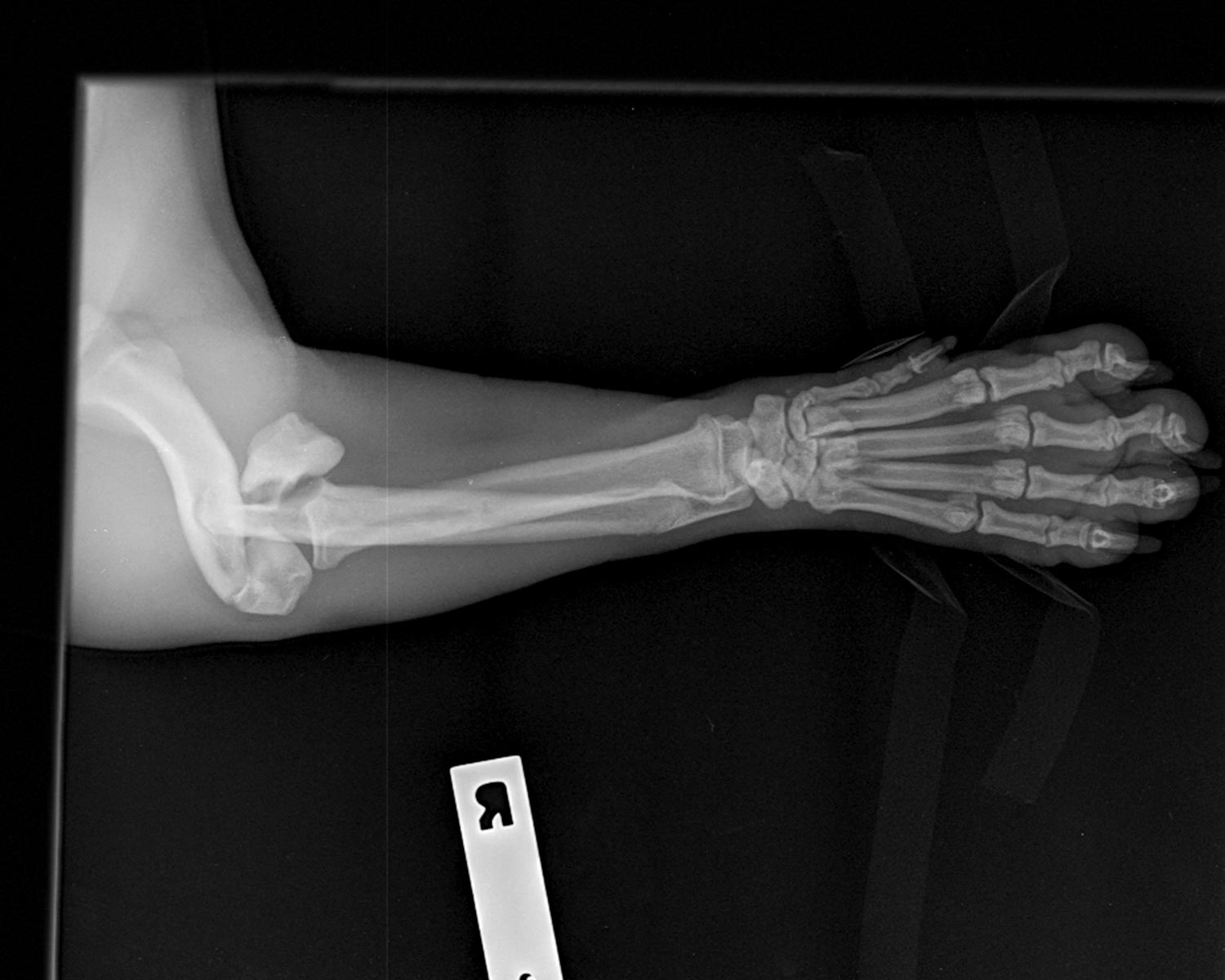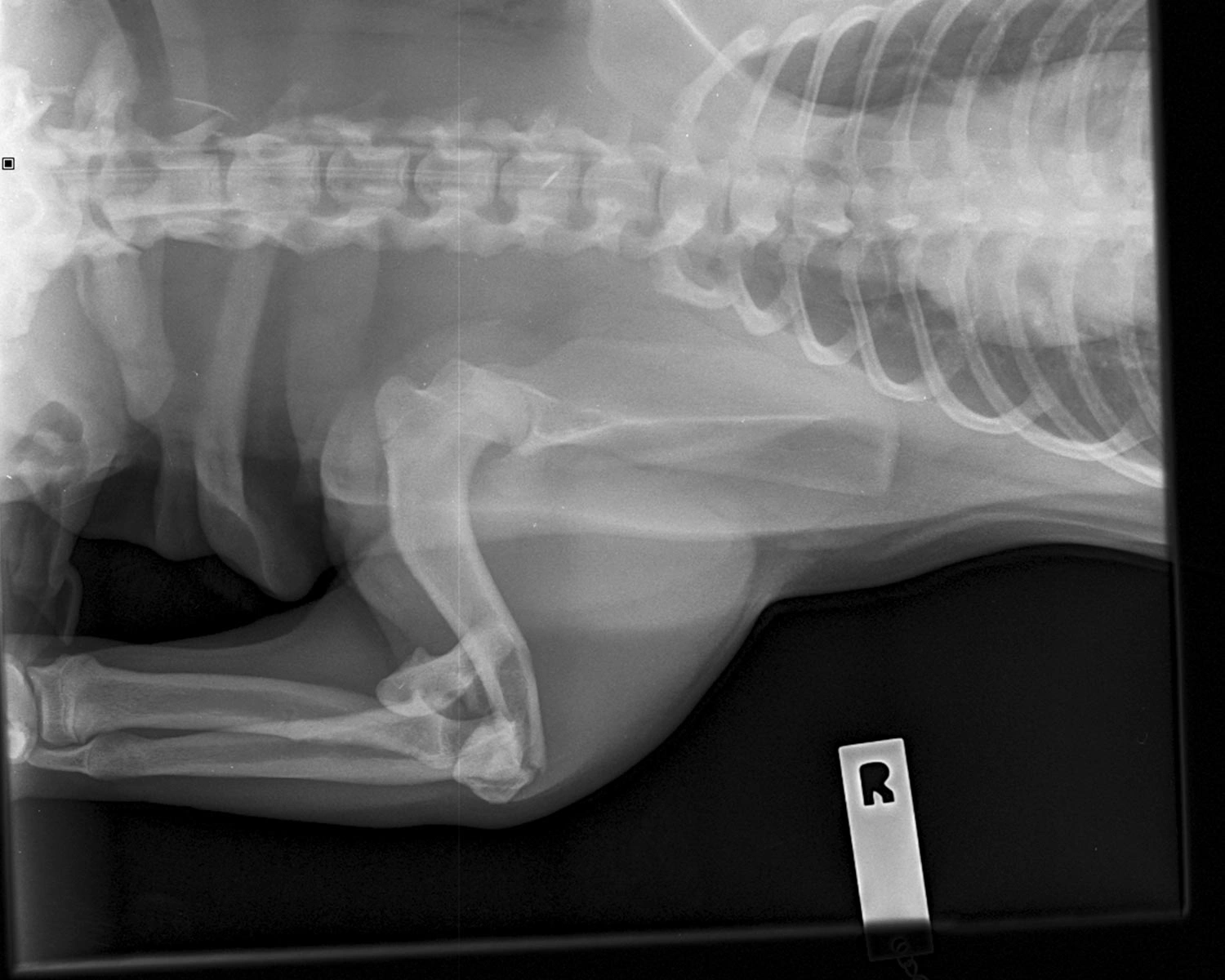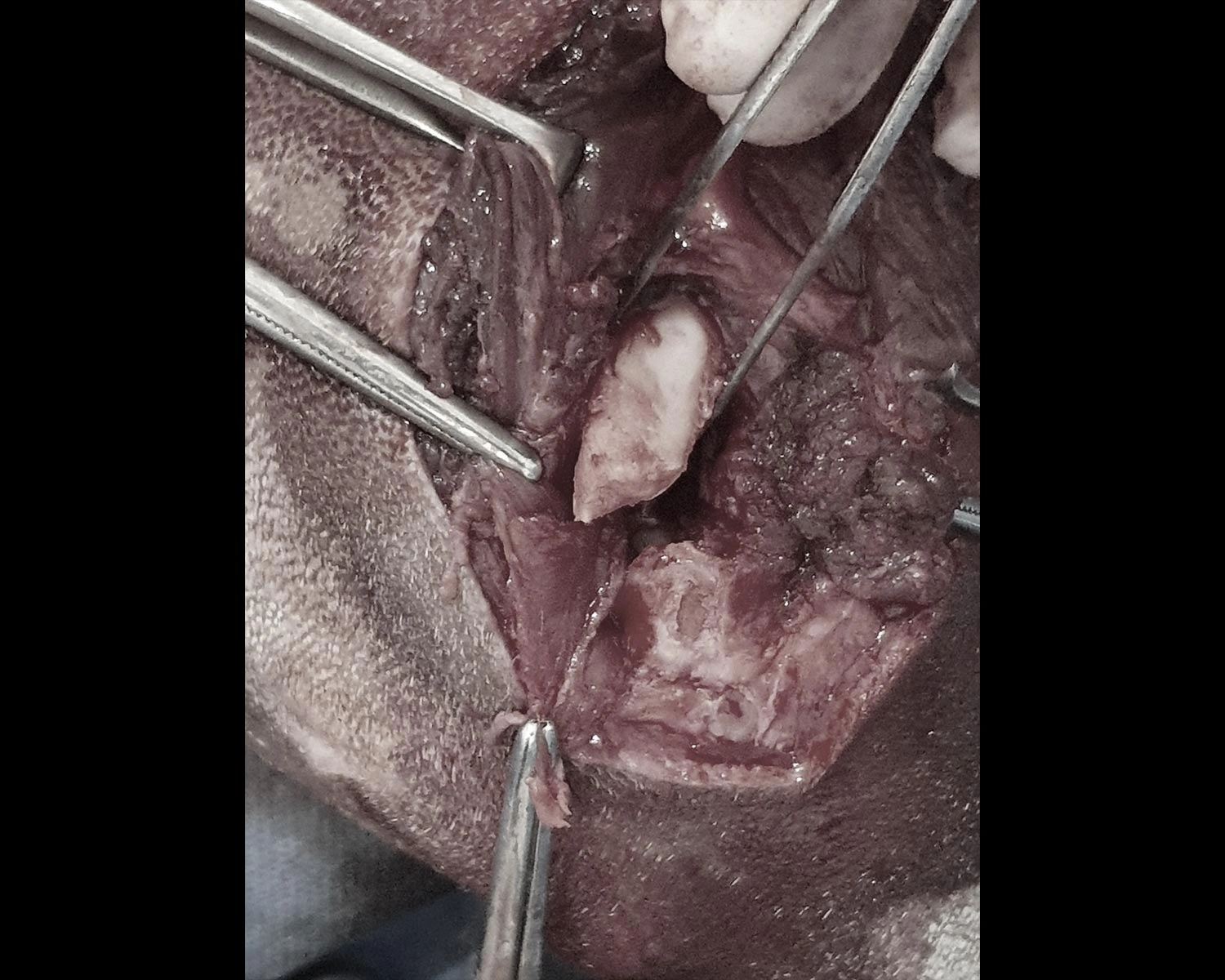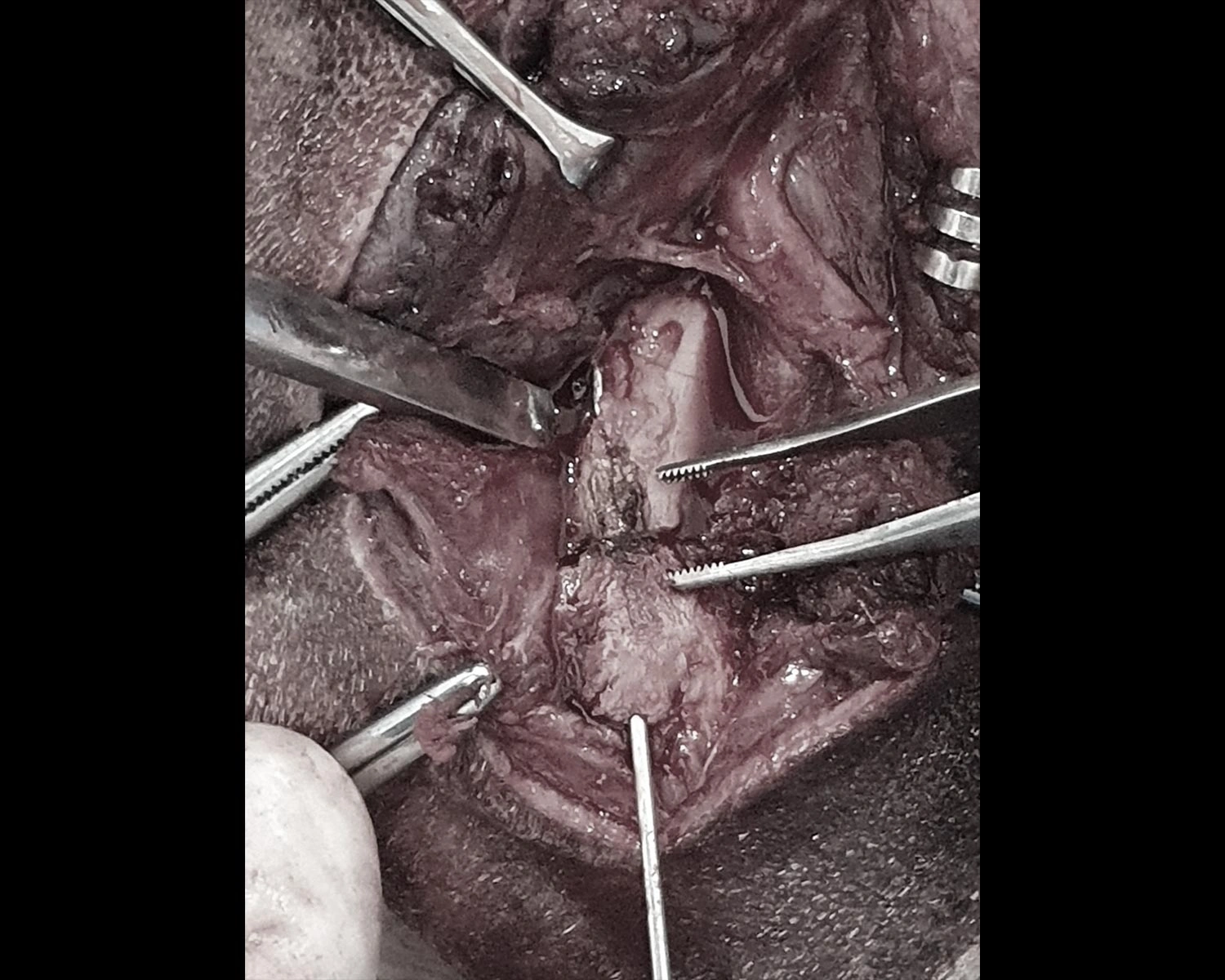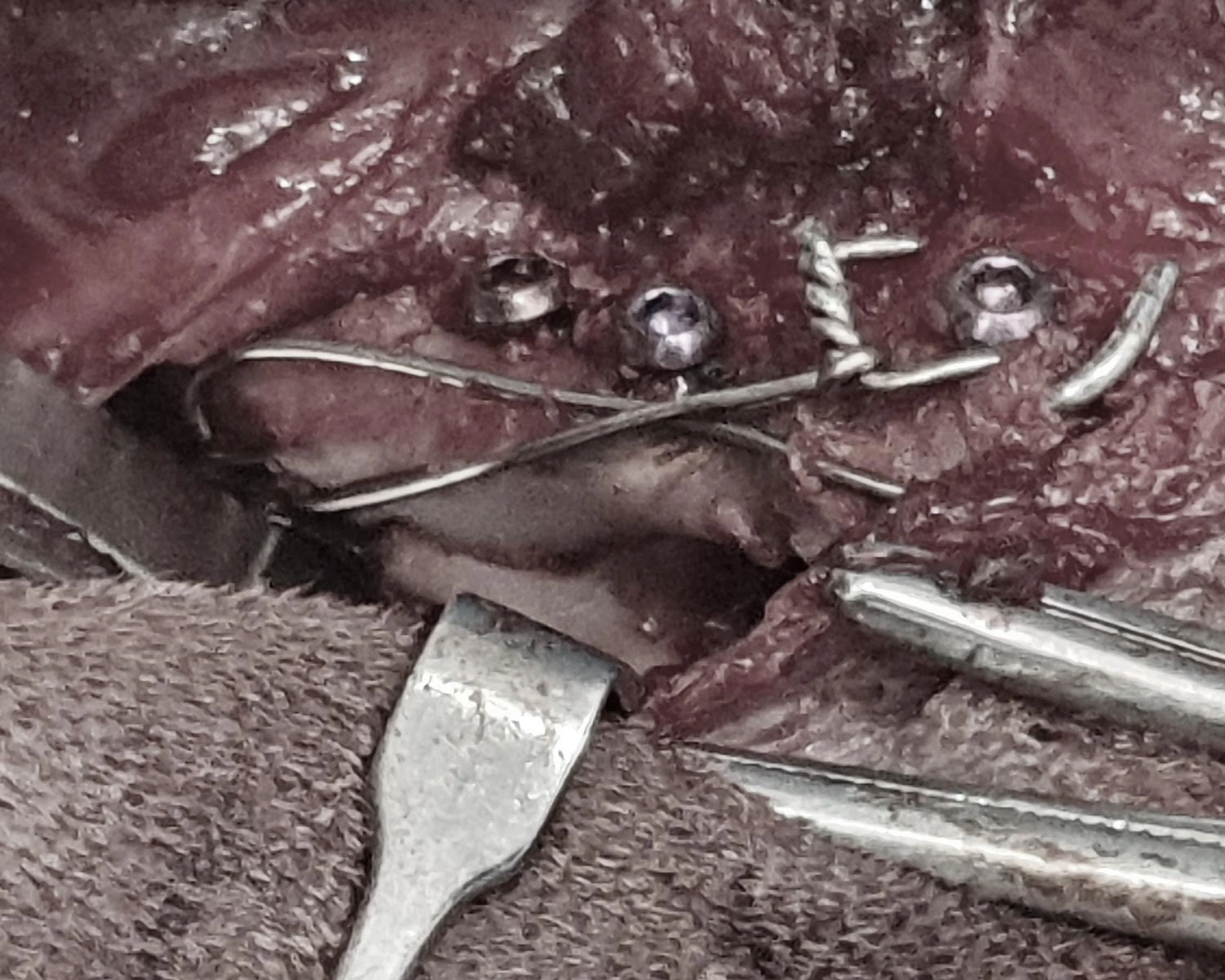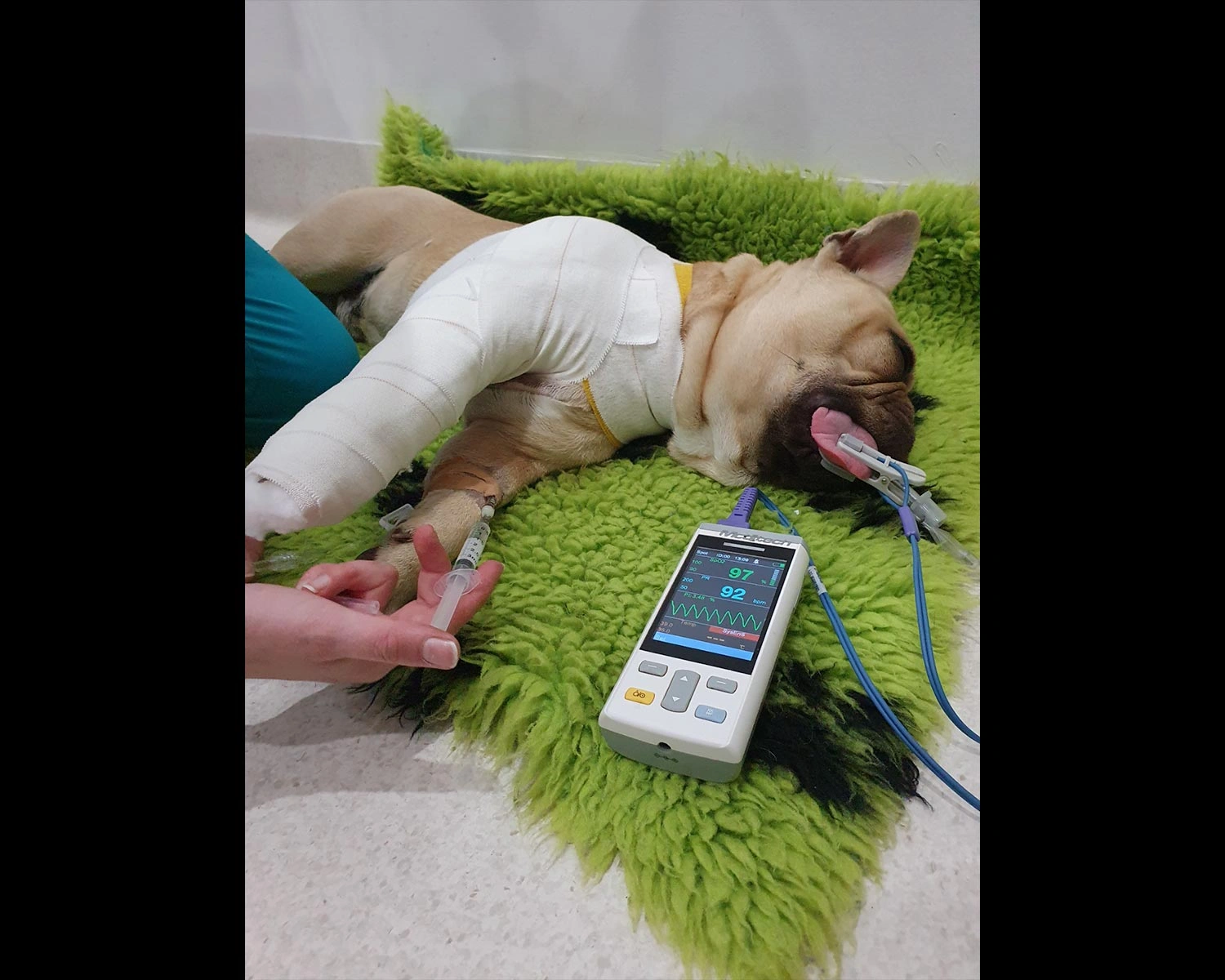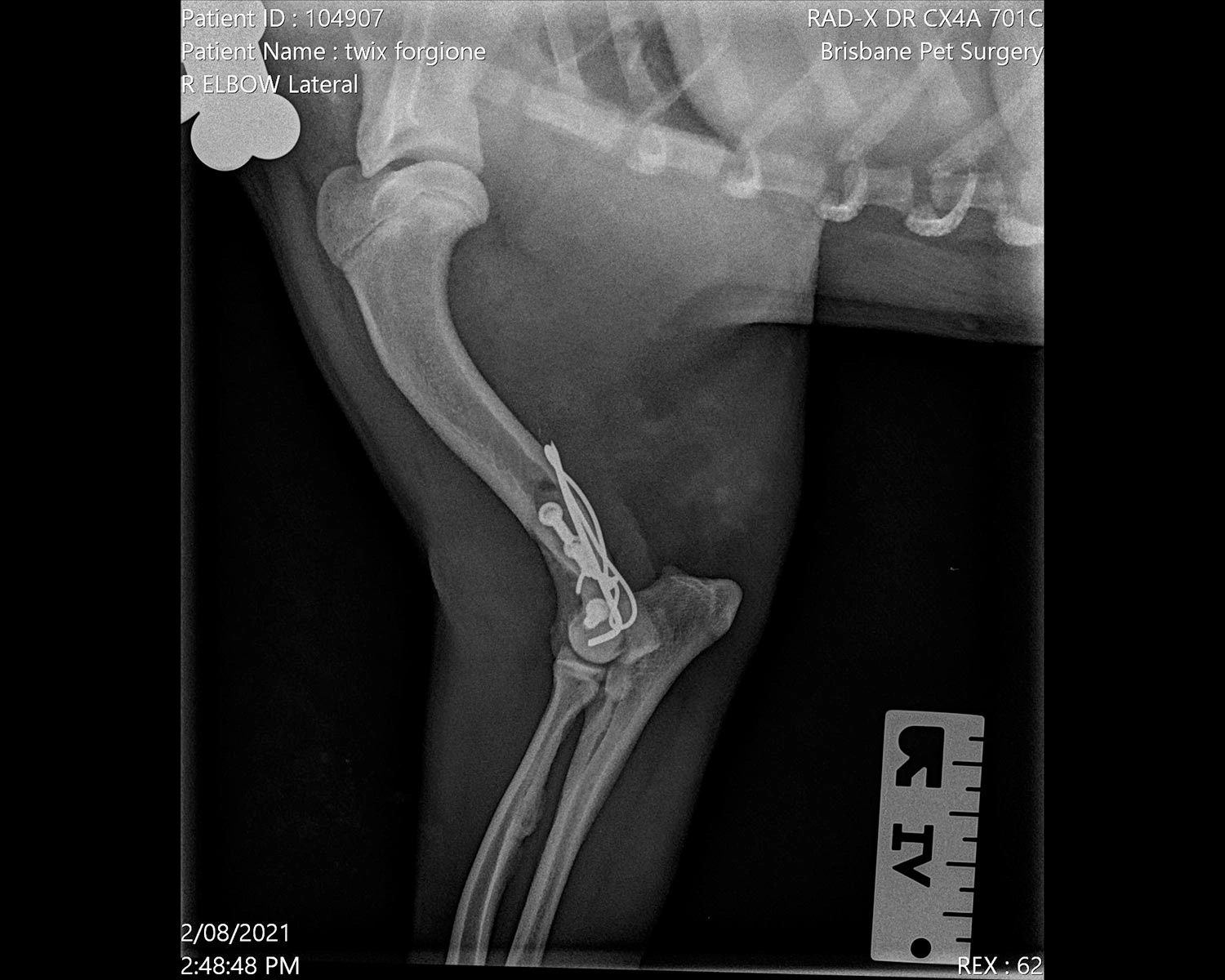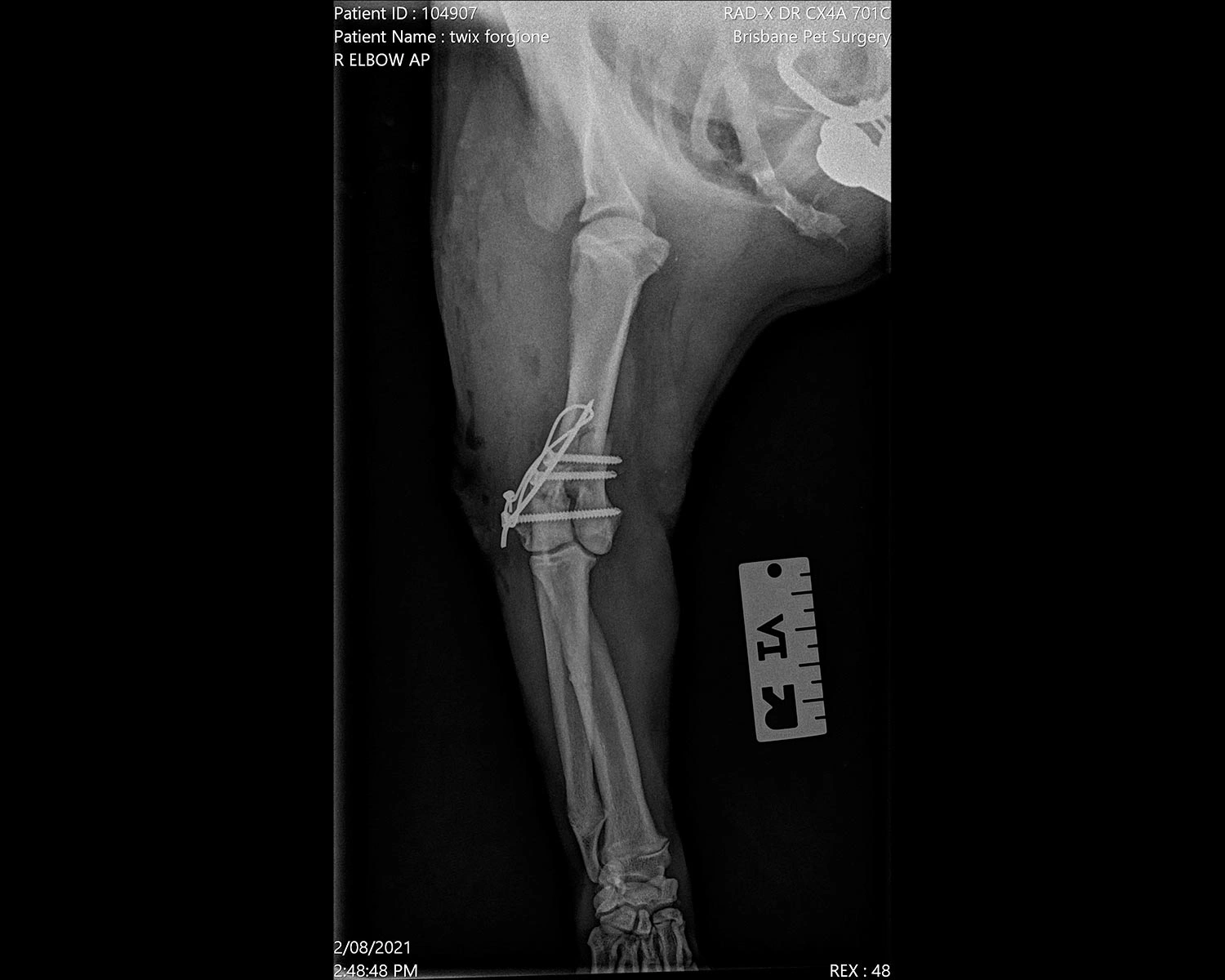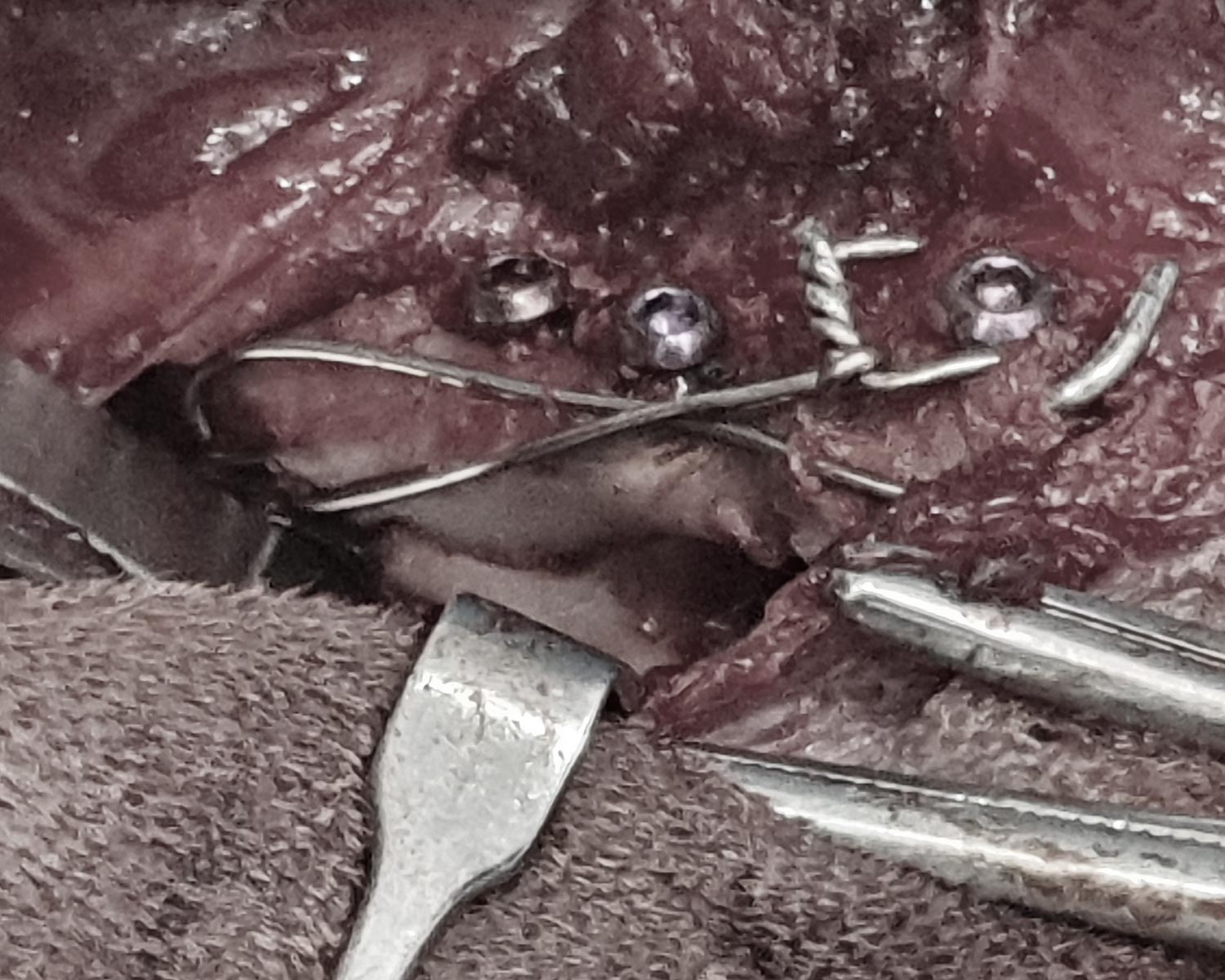Twix – 8mo French Bulldog With Right Fore Distal Humerus
A boisterous 8 month old French Bulldog, Twix presented to the clinic with right forelimb lameness. X-rays revealed he had suffered a complex fracture of the distal condyles of the humerus.
This is actually an age specific injury. It’s most commonly seen in young or growing dogs and is usually secondary to jumping off something, which results in the radius and ulna driving up through the end of the humerus as the dog lands on their foreleg.
Twix’s case not only involved a fracture between the condyles and between where the right condyle joined the humerus, but also a shaft fracture of the distal humerus.
How is a distal humerus treated?
In Twix’s case, we reduced the gap between the fractured condyles with a clamp, which was then held together with a screw. A pin was placed through the condyle and into the distal humerus to stabilise the fracture. The fracture between the shaft and left condyle was stabilised using a clamp and 2 screws through the distal humeral shaft.
How are they diagnosed, treated and cared for after surgery?
Twix was admitted for distal rear fore humeral complex condylar fracture. He was placed onto IV fluids via a catheter, induced with propofol slow IV to effect and intubated.
The skin over the affected distal humeral (or elbow) area was incised and the fracture was exposed. Once it was discovered that the elbow was dislocated medially and unable to be reduced, it was placed in the correct position, the condyles were clamped and drilled. The condyle separation was stabilised using a titanium screw, K-wire was placed through the lateral condyle into the distal humerus, and the medial distal humeral arm fracture was reduced and stabilised. A figure of 8 wire was placed across the lateral condyle fracture to further stabilise it.
The muscles and subcut tissues were closed with absorbable sutures, then the skin was closed with absorbable ford interlocking.
Twix returned to BPS after 1 week for a bandage change, then every 2 weeks after this until the wound had healed. He was cage rested for 6 weeks followed by 2 to 4 weeks of lead walks before being allowed off lead at 10 weeks post surgery. X-rays were taken between 6 and 8 weeks to check on his recovery progress.
How much does the treatment cost?
Cases like this one typically cost between $1,800 and $2,500 at Brisbane Pet Surgery (far less than the $6,000+ it would cost at a referral centre). Twix’s surgery cost $2,230.
Procedure photos for recent case
Warning: graphic images
